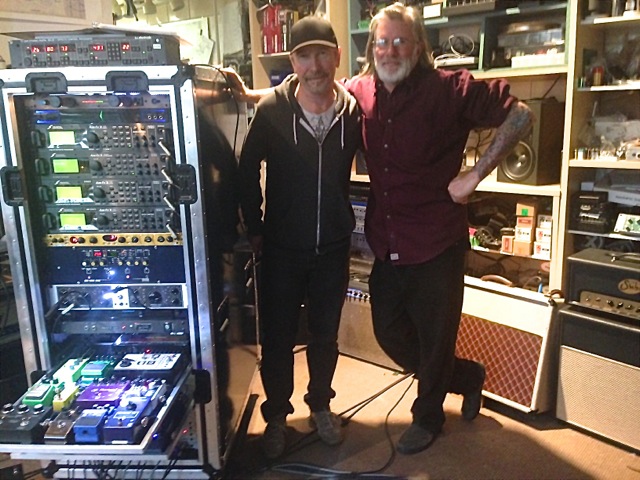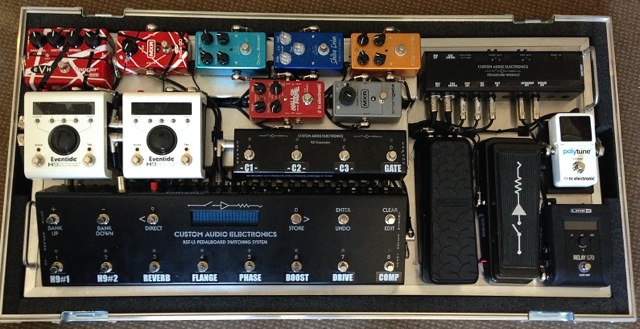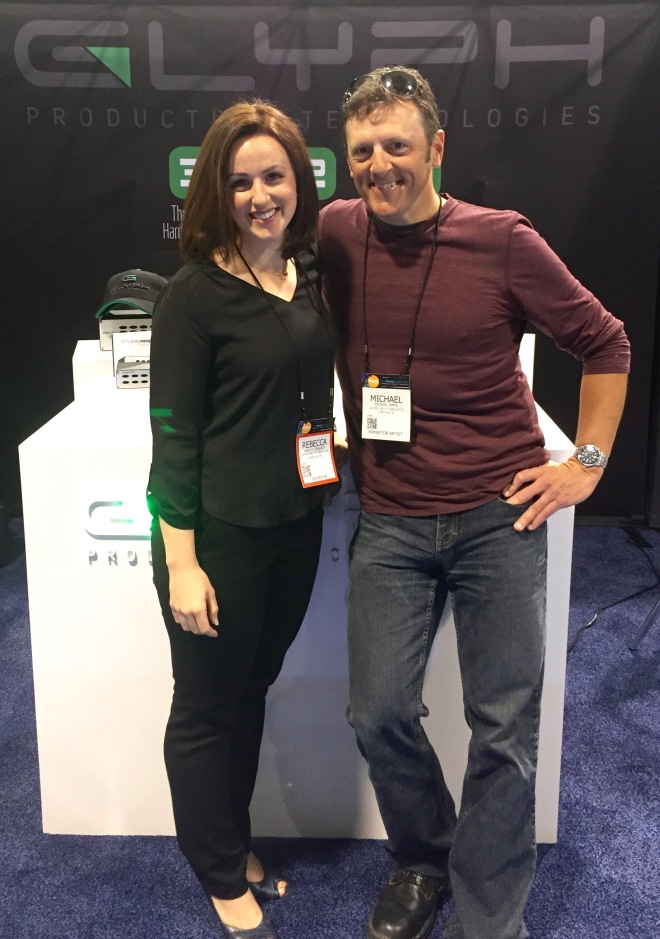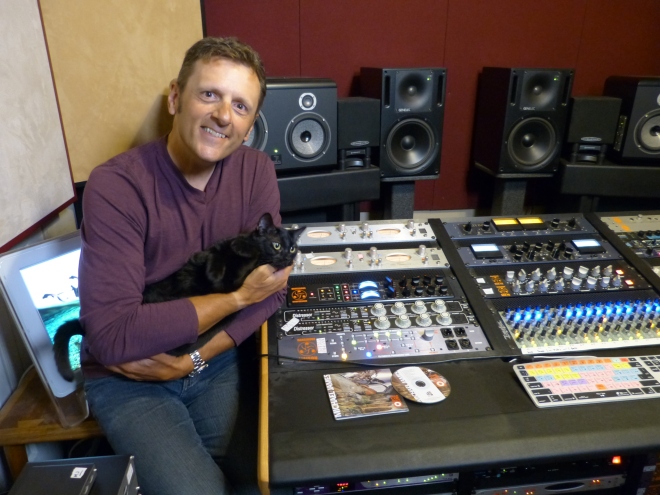Hunter S. Thompson purportedly stated, “The music business is a cruel and shallow money trench, a long plastic hallway where thieves and pimps run free, and good men die like dogs. There’s also a negative side.”
One aspect of the negative side is the constant struggle for position and power. As we were coming up in the biz, many of us believed that we could not take a breather because, if we were to even briefly take a foot off the gas pedal, someone else would slither into the gap, possibly taking our place. Fourteen to sixteen hour work days were common. At times it felt like we were all throwing elbows to cram our way into an overpacked bus on a perilous mountain road to success.
As the years passed and my discography blossomed, I no longer felt the stifling pressure of being packed in a tin of sardines. The air became more clear as I climbed the hill, and I could finally see clear skies and vast horizons. There was room to spread my wings, and my veteran colleagues were actually friendly and supportive, in stark contrast to the treacherous thugs, thieves and liars crammed at the base of the climb.
During the 1990s and early 2000s there seemed to be plenty of work for accomplished record producers and engineers in Los Angeles. Records and demos were being recorded at commercial facilities, tape was being manufactured, pro audio rentals were booming, money was flowing, and an entire industry was thriving. Even if you spent three days a week on the phone or in meetings to hustle two days of paid work in the studio, you could live fairly well.
By 2008 the money belts had severely tightened, thanks to both internal and external factors. Music fans felt like they were getting shafted by major labels who released 12 song albums that contained one or two singles padded with ten tracks of filler. Relative to alternative choices of how to spend $16.98, an LP CD no longer seemed like such a good value. Piracy also contributed to the demise of the record business, as did the collapse of Wall Street, which incidentally cost me one of my indie labels, Fresh Baked Music LLC.
Freelance producers and engineers, along with recording studio managers, took extreme measures to get jobs in the pipeline. Fees took a nosedive as supply abruptly ballooned inversely to the declining demand for services. Fewer major label albums were being made, and recording funds shrunk. I clearly recall Interscope A&R man Tony Ferguson and I chatting over lunch about how new rock bands might get an $80,000 recording fund instead of the formerly commonplace $250,000…or sometimes $400,000 if the deal was competitive (i.e. a bidding war). Even superstar artists who might be worthy of a $1,000,000 recording fund were feeling the pinch by getting $250,000.
Needless to say, the neo pros at the bottom of the totem pole were getting squeezed out of the game. Meanwhile, the veterans were scrambling to reduce their cost of doing business and to get as many gigs as possible, including those that would have previously been too small to consider. Some guys went as far as saying just about anything (i.e. lying) to get a gig, unscrupulously damaging the careers of others along the way. Even though it is wrong, it is no surprise that desperate people become ruthless and conniving if that is what it takes to put food on the table. Therefore, it was quite refreshing whenever I saw potential rivals band together to create a rising tide that would cause all boats to float higher.
My friend Ronan Chris Murphy personifies this enlightened attitude of working with each other instead of against one another. Although his discography boasts such luminaries as King Crimson, Tony Levin and Ulver, Ronan has always remained indie friendly with respect to accessibility and flexible pricing. He shares his knowledge generously via his Recording Boot Camp workshops. He also created one of the first audio blogs and he enthusiastically hosts occasional recording expos that bring together top producers and engineers with aspiring pros looking to acquire knowledge and expand their networks.
Ronan and I organically evolved into fans and champions of each other. We have shared techniques and advice, we have recommended each other for jobs, and we modestly promote each other s special events on social media. While you, the reader, may perceive us as rivals, we think of each other as support. We are not worried about losing clients to one another. We have our own unique sense of aesthetics, so it is unlikely that an artist would pit one of us against the other. Instead of competing against each other, we focus on the positive, specifically rising the tide so that we rise with it. After all, there is plenty of room at the top
As a special treat, I was able to interview Ronan for this blog post. Enjoy the read! And if your star is rising in the record biz, remember to make friends instead of enemies, and to build bridges instead of walls.
MJ: Tell me about your enlightened way of thinking. Why are you so generous with, and supportive of, colleagues like me, who might appear to be rivals to an outsider?
RCM: Ha! I am not sure I get to call myself enlightened, despite the Buddha belly, but I have been around long enough to know that being a good member of a community is better than trying to go it alone. I think you and I virtually met years ago on the Gearslutz forum and we sort of bonded because we both had a really similar disposition of trying to share knowledge in a way that cut through the BS and approached advice from a practical real world perspective. Once we got to know each other in the real world we found that we had common approaches to music and work ethics and mostly that we could trust the ethics and the quality of each others work. As pros, we would love to do every project, but some of them might not be right for me that might be right for you, or one of us is too busy at a certain point. We are able refer gigs to each other and we even have clients that hire both of us at different times.
I guess the take away from all of this for people starting out is that you want to be competitive with other producers and engineers, but you also want to be supportive and not adversarial. My biggest gig this year was a referral from some one that I am technically a direct competitor with. He was offered the gig, but had some important family commitments at the time, so he recommended me because he knew I could do good work and that I would treat the client well. Right now I am working in Iceland and had to turn down a gig, but referred it to another engineer. It was actually some work that did not really have the budget for some one at our level, so I passed it to a younger engineer whose work I really trust.
You and I both do a lot of educational outreach, and there is nothing but good that comes from people learning from both of us. It is funny, you have been doing these cool events with our friend Rob Chiarelli (Will Smith, Christina Aguilera, P!nk). Rob and I both lecture every year at something called the Taxi Road Rally. He and I seem to have polar opinions on a few concepts and people will come up to me confused that I said something enthusiastically and Rob said the opposite enthusiastically, and they expect that to be some kind of drama. I always just tell them that that Rob is a bad ass mixer!! Go back to your studio and try both our ideas and see which one gets you the sounds you want or fits into your workflow better.
MJ: That is truly great advice. Rob and I did another event just last night with Jared Stansill at Pro Audio LA, and were laughing out loud because we answered a series of questions from opposite workflow perspectives! We were concerned that we would totally confuse the audience, who fortunately shared our amusement. The crowd was mostly pros, so they understood that there are many roads that lead to the same destination. You, Rob and I share the philosophy that education must train students to think analytically so that they are better equipped to make confident artistic decisions. Apropos of that…
Your powerful Recording Boot Camp workshops (even the ones in the beautiful rustic Italian villa!) are much more affordable than folks generally assume, probably due to the perception created by another well known mixing retreat that happens at a beautiful estate in France. Your Boot Camps provide a lot of value and they are empowering for anybody who wants to record themselves or others in the comfort of their own space, without the pressure of a ticking clock at an expensive commercial studio. Please briefly tell my readers why they might consider attending and where to find out more than this space allows.
RCM: Thanks. Yeah, I started one of the fist one week recording programs, and I have always tried to keep the rates really affordable. The truth is that my company can make fair money while keeping the prices down and I want to keep the classes small enough that students can get personalized attention. Most boot camps have a maximum of 4-6 students and we are cheaper than many options that allow 15-25 students into a class. I do not see any reason to make it harder or a lesser experience for the students if I am already making decent money.
But all that aside, the course I developed is all about mastering fundamentals at a deep level and the classic techniques that the great producers and engineers have been using for decades. We spend an entire day on compression because it is such a massively important creative tool that can do so much more than most people think. Some less experienced people do not realize that if you master a pretty small set of core concepts, you can move between jazz, pop, metal, country, etc with ease. It is all the same concepts applied differently. When I started the program back in 2003 I thought most of the students would be home recordists, but it is far more than that. I get a cool mix of hobbyists and pros and even some producers with major label credits.
People that want to learn more can check out http://www.recordingbootcamp.com/ and contact me through that site.
MJ: Do you have any words of wisdom for aspiring recordists trying to catch a break, or for veterans who want to remain relevant in a constantly changing industry?
RCM: I think the biggest piece of advice I could give would be the same for both of those. In the end, this is a people business, and that is the case now more than ever. Especially these days when every other house has a studio in it, people no longer find a “studio” to book. People search out a guy or gal that they trust to do a good job taking care of their music. So, as much as we all love getting a new pre-amp or software updates, those are not the things that really get us clients…although they help us do better work once we have the clients. Having a connection with people is what gets clients. Get tapped into your local live music scene, or local houses of worship, or online communities. Anything you can do to get people to know and to trust you. Even though I do not get out to live shows as much as I would like these days, I have always been really active via online forums, Recording Boot Camp, Ronan’s Recording Show, Facebook, and by going to conferences and other events whenever I can. In an industry that is in decline my business is still fairly solid. I have friends that have bigger credits that I have, and in truth are probably more talented than I am, whose careers have completely died. I feel it is because they did not actively work to stay involved in the communities where jobs come from these days.
MJ: Thanks for taking part in this blog post, Ronan!
RCM: My pleasure. It is always a blast to do anything with you!
















